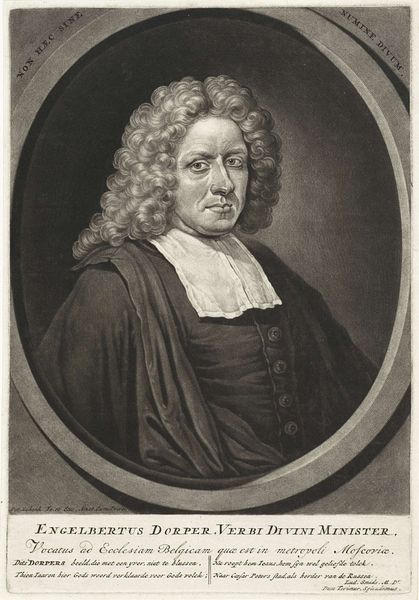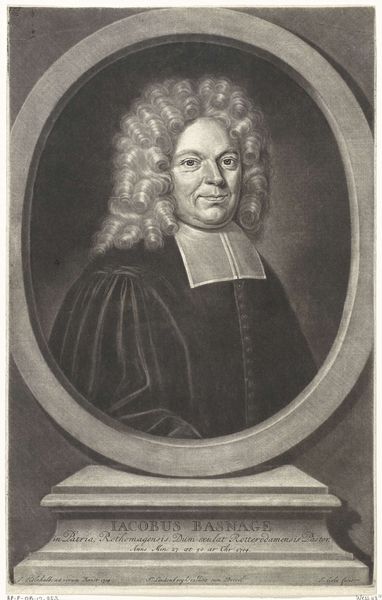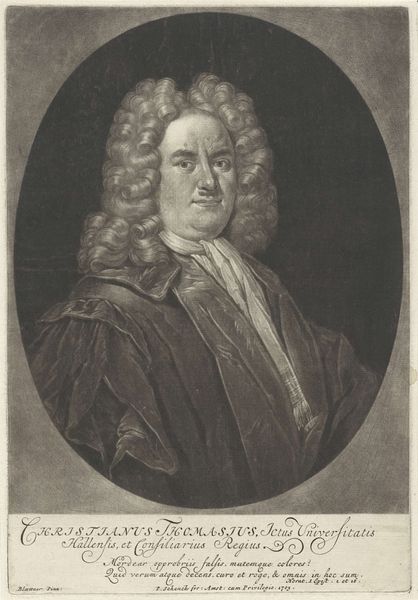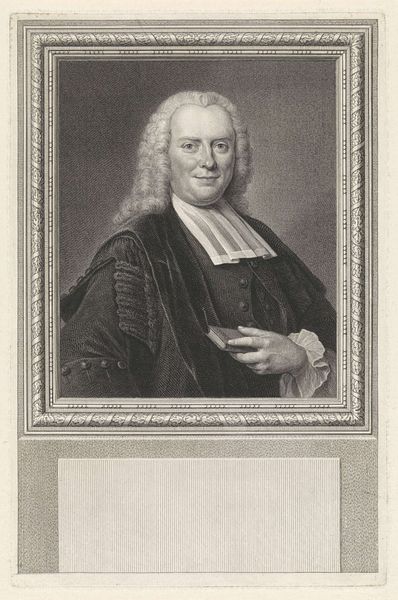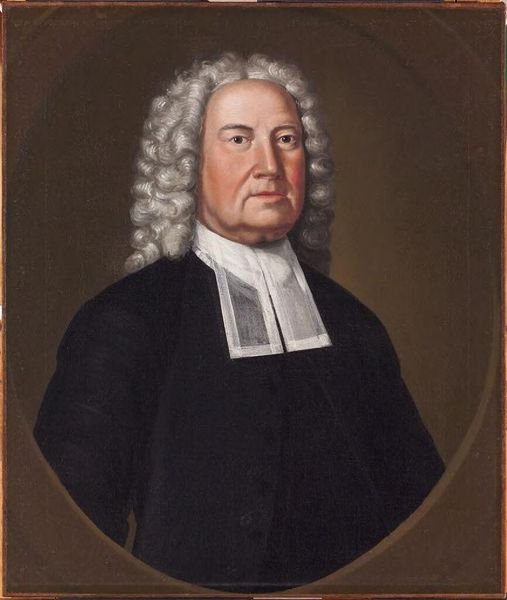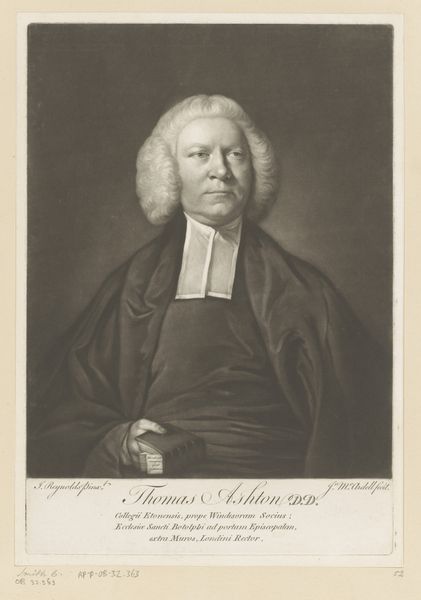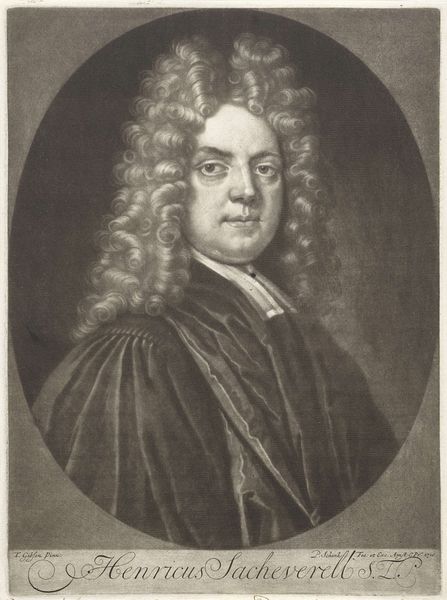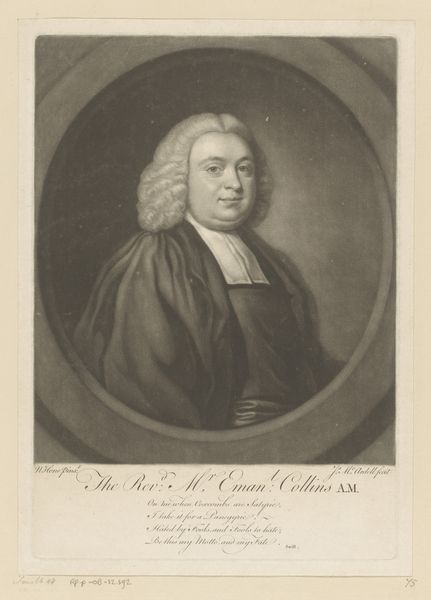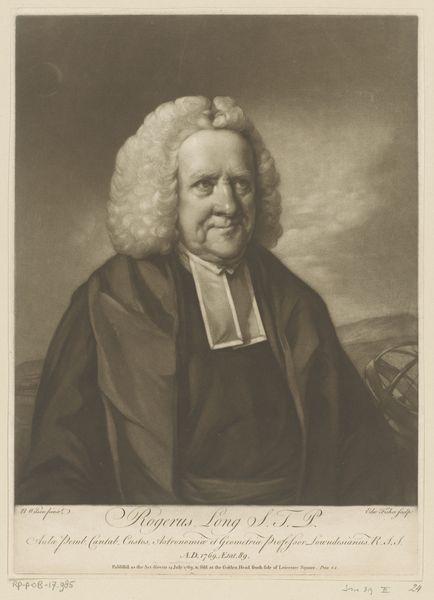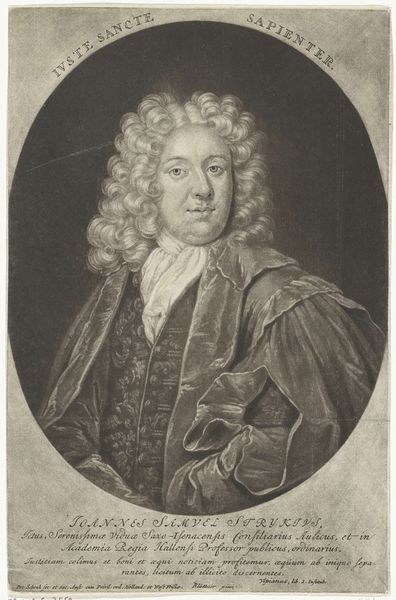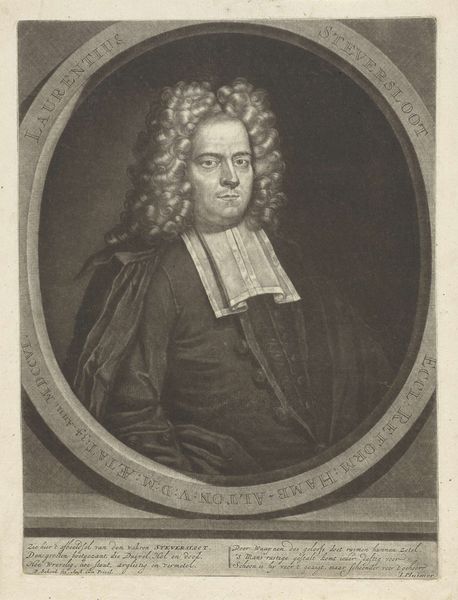
engraving
#
portrait
#
neoclacissism
#
portrait drawing
#
history-painting
#
engraving
#
portrait art
Dimensions: height 356 mm, width 277 mm
Copyright: Rijks Museum: Open Domain
Curator: Good morning. We are looking at Charles Howard Hodges’s engraving dating from 1790, entitled “Portrait of Henry Hubbard.” Editor: Interesting. The mood struck me immediately—one of a self-important authority. Look at the weight of that robe, and the confident expression. Curator: Hodges, an Englishman who later became known for his work in the Netherlands, really captures the spirit of his subject, don't you think? Editor: I agree, there's certainly an element of the Neo-classical ideal at play here. That being the representation of civic virtue and importance, through the sitter's powerful position as a religious figure. Look at that robe; so dark against the cleric white bands at the neck. It is a clear statement of social standing within a religious institution. Curator: Absolutely. Consider, too, the artistic function of the stark, near symmetrical composition, in that powerful, simple contrast you observed. Semiotics reveal much about the work’s social setting and symbolism of power. Hubbard’s imposing figure seems almost illuminated by the reflected light of his shiny bald head and perfectly coiffed, if somewhat excessive, wig. Editor: And we must remember that the late 18th century witnessed revolutions in both America and France. It seems all the more impactful as Hubbard emanates control despite the radical socio-political shifts occurring as he was being memorialized. Curator: It prompts thoughts about how power is portrayed through the visual vocabulary of the time—especially how individual image maintenance upheld the institutionalized authority as if they were one and the same. It may invite interesting commentary on the politics of self-presentation. Editor: Very insightful! This engraving allows us to investigate art’s inherent potential in preserving a public record of cultural and political identity in the pre-photographic era. Curator: Indeed! It shows how an image is a time-capsule for decoding ideological concepts and power dynamics of a particular moment. Editor: It makes me question whose stories get amplified—something crucial to examine within an historicized lens. Curator: A necessary consideration in this, as in every artistic engagement. Thank you!
Comments
No comments
Be the first to comment and join the conversation on the ultimate creative platform.

